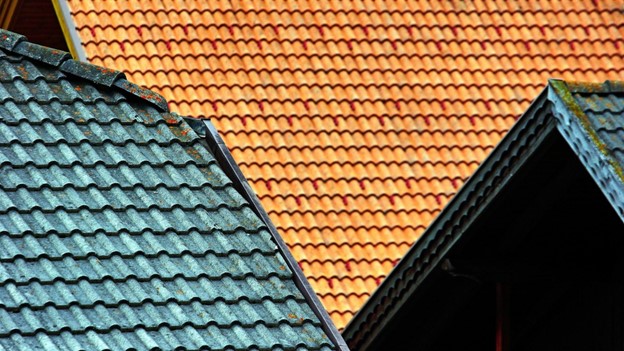Your roof is one of the most critical components of your home, providing protection from the elements and contributing to the overall structural integrity of the building. However, like all parts of a home, roofs can deteriorate over time due to weather, age, and wear and tear. When problems arise, homeowners often face a crucial decision: should they repair the roof or replace it entirely? Here’s what professionals have to say about making this important choice.
The Value of Hiring Professionals for Roof Installation
When it comes to installing a new roof, the expertise and experience of professional roofers cannot be overstated. While DIY projects may seem tempting to save costs, the intricacies of roofing require specialized knowledge and skills that professionals possess. Not only do they ensure that the installation is done correctly and up to code, but they also have access to quality materials and tools that homeowners may not. Moreover, hiring professionals provides peace of mind knowing that the job will be completed safely and efficiently. While it’s true that installing a new roof costs, the long-term benefits outweigh the initial investment. A professionally installed roof can improve energy efficiency, enhance curb appeal, and increase the overall value of your home. In the end, trusting experts for such crucial tasks is a wise decision that pays off in the durability and longevity of your roof.
Understanding the Scope of the Problem
The first step in deciding whether to fix or replace a roof is understanding the scope of the problem. Professional roofers suggest that a thorough inspection is necessary to determine the extent of the damage. This includes checking for:
Missing or damaged shingles: These are often the most visible signs of roof damage. A few missing shingles might only require a simple repair, but widespread shingle loss can indicate a need for replacement.
Leaks and water damage: Water stains on the ceiling or walls can signify roof leaks. Small leaks might be repairable, but multiple leaks or extensive water damage often mean a new roof is necessary.
Sagging areas: These can indicate structural issues within the roof’s framework. Sagging generally suggests severe damage that might necessitate replacement.
Mold and rot: The presence of mold or rot is a sign of prolonged moisture exposure and often requires more than just surface repairs.
Age of the Roof
The age of the roof plays a significant role in the repair-or-replace decision. Most asphalt shingle roofs have a lifespan of about 20 to 25 years. If your roof is nearing the end of its expected life, professionals typically recommend replacement over repair. On the other hand, if the roof is relatively new and the damage is minor, repairs might be sufficient.
Cost Considerations
Cost is a major factor in deciding whether to repair or replace a roof. Here’s a breakdown of what professionals suggest considering:
Repairs
Short-term solution: Repairs are generally less expensive upfront compared to replacement. This can be a viable option for minor damage or if you’re not ready to invest in a new roof.
Limited longevity: Repairs can extend the life of your roof temporarily, but if the underlying issues are significant, you may find yourself facing more repairs soon.
Patchwork appearance: Multiple repairs over time can lead to a patchwork appearance, which might affect your home’s curb appeal.
Replacement
Long-term investment: While more expensive upfront, a new roof can last for decades, making it a cost-effective solution in the long run.
Increased home value: A new roof can enhance the value of your home and improve its overall aesthetic.
Peace of mind: A complete replacement removes the uncertainty of ongoing repairs and potential future damage.
Environmental Considerations
Sustainability is becoming increasingly important in home improvement decisions. Professionals note that replacing a roof can generate a significant amount of waste, with old materials often ending up in landfills. However, modern roofing materials are more energy-efficient and can improve your home’s insulation, leading to lower energy bills and a smaller carbon footprint over time.
Material Options and Durability
The choice of roofing material can influence the decision to repair or replace. Different materials have different lifespans and durability:
Asphalt shingles: The most common roofing material, typically lasting 20-25 years. Repairs can be simple, but if the shingles are reaching the end of their lifespan, replacement is advisable.
Metal roofing: Known for durability and longevity, often lasting 40-70 years. Minor repairs can extend the life of a metal roof, but extensive damage might still necessitate replacement.
Tile and slate: Extremely durable, with a lifespan of 50-100 years. Repairs are often sufficient unless there’s structural damage.
Wood shakes and shingles: These have a lifespan of 20-30 years. Regular maintenance and repairs can prolong their life, but significant damage might require replacement.

Deciding whether to fix or replace your roof is a significant decision that involves several factors, including the extent of the damage, the age of the roof, cost considerations, environmental impact, and the type of roofing material. Consulting with a professional roofer can provide the insights needed to make an informed decision. By weighing the pros and cons of each option and considering the long-term implications, you can ensure that your home remains protected and maintains its value for years to come. Whether you opt for repairs or a complete replacement, investing in your roof is an investment in the safety and longevity of your home.

Recent Comments